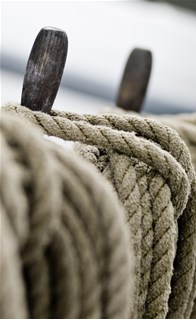|
By: Jeroen Berger, August 10, 2017 In the port of Rotterdam (the Netherlands) alone, every seven minutes a ship docks in and out. All these vessels have taken ballast water or discharged ballast water. For example, every two weeks the entire port capacity has been replaced by ballast water undetected. And in that water you will find a lot of things which do not belong there. The so-called exotic species, the non-indigenous species, will be discharged with ballast water by ships and may lead to great local disturbance of our ecosystem.
Although ballast water is taking care of stability and balance of the ship and is making sure that the ship propeller stays underwater, the movements of exotic species have become one of the greatest threats for marine biodiversity of the oceans. Berger Maritiem has been doing some research how the influence of ballast water can be minimalized.
What is ballast water exactly and what are the consequences?
In many cases ships with ballast water on board are changing exotic species between various continents as a kind of travelling fish tank. The impact from ballast water is not only noticeable on environmental and economic terms, the spread of some exotic species could have a negative effect on public health in some cases. For example, a little worm in ballast water could lead to a spread to the disease cholera.
If we compare the spread of exotic species with oil pollution, then we see that oil pollution is visible, has a major media impact, is it initiating political reactions and usually restores the environment after some time. If we are looking to the spread of exotic species, then we see that these will arise undetected and will often increase very largely.
Although the spread of exotic species will arise undetected, the consequences are almost irreversible. The Chinese mitten crab is a good example of this. This kind of non-native species originally came from Asia, which you now find at the Dutch coast.
The Chinese mitten crab, which you now can find in the brackish and fresh water of the Benelux, poses a major threat to many indigenous species. For example, the Chinese mitten crabs are not that much picky when it comes to food. Besides that, their pincers take care of serious economic damage for fishing and fyke nets, but also for the stability of the dams.
Possible solutions
A Ballast Water Treatment System (BWTS) can contribute to prevent the negative consequences of ballast water.
Meanwhile, there are various types of Ballast Water Treatments Systems on the market. For example, ballast water treatment with UV light, a system which injects chloride dioxide into the ballast water as it is loaded and systems based on chemical methods. Also a couple of after-treatment systems are developed. These kind of systems are working, for example, with peracetic acid.
Regulation
The International Convention for the Control and Management of Ships' Ballast Water and Sediments (BWM Convention) will enter into force on 8 September 2017, announced by the International Maritime Organisation (IMO). However, the date on which existing ships of 400 GT or more must meet the D2 standard requirements (these covers specifies levels of viable organisms left in water after treatment) have been postponed to 8 September 2019. This is the new date for these vessels that need to renew their IOPP (International Oil Pollution Prevention) certificate to comply with the D2 standard.
An IOPP certificate must be renewed every five years. This means that all existing ships of 400 GT or more must comply with the D2 standard between 8 September 2019 and 8 September 2024. Newbuilding vessels delivered after 8 September 2017 must comply directly with the D2 standard. Vessels below 400 GT must meet the D2 standard on 8 July 2024.
It is expected that many ship owners and shipping companies will choose to install a Ballast Water Treatment System (BWTS) from the moment they must comply with the D2 standard. Berger Maritiem will be pleased to help you with finding, selecting, engineering and installing the right Ballast Water Treatment System for your type of vessel.
| |
| |
|
Your information will be kept confidential. See our privacy policy for more information. |
Can the negative consequences of ballast water be prevented?




